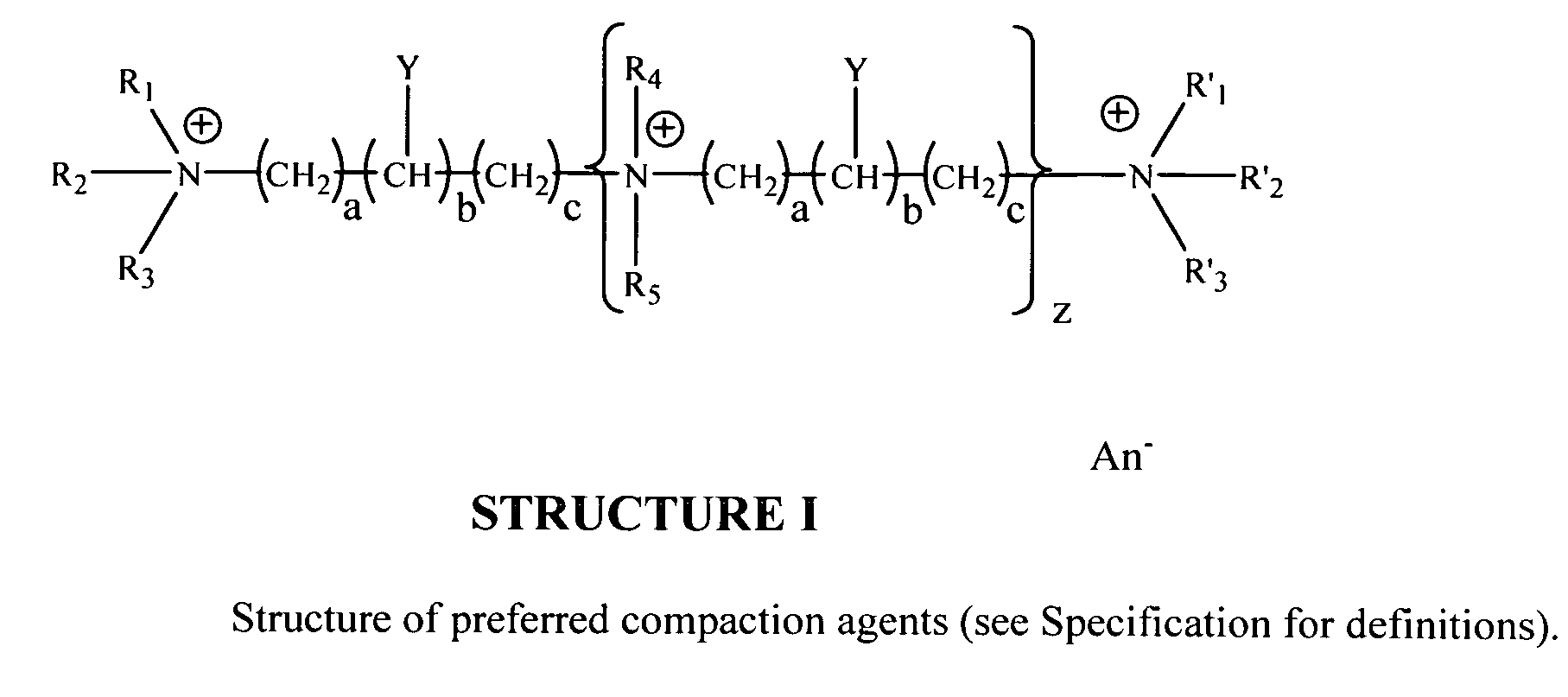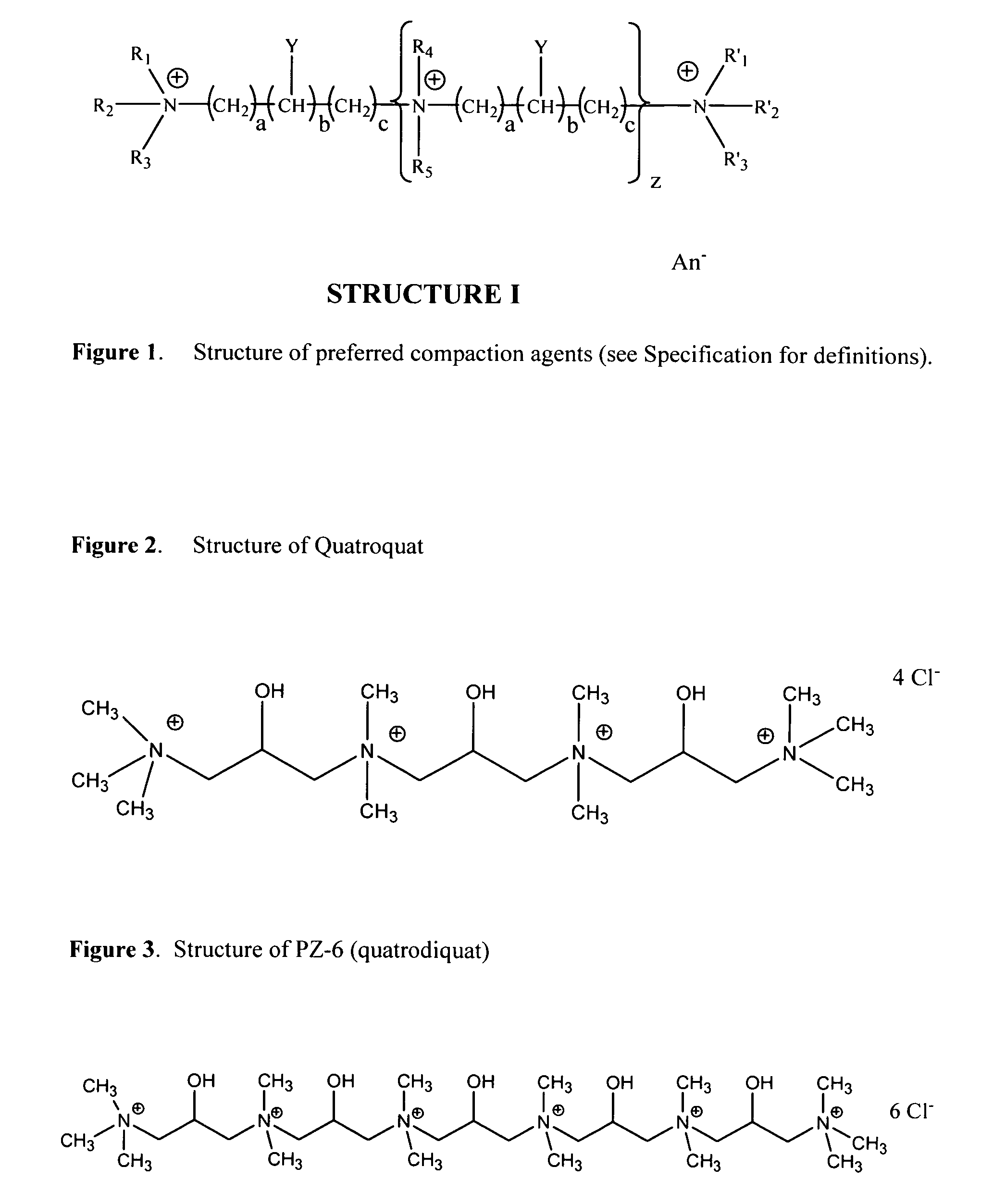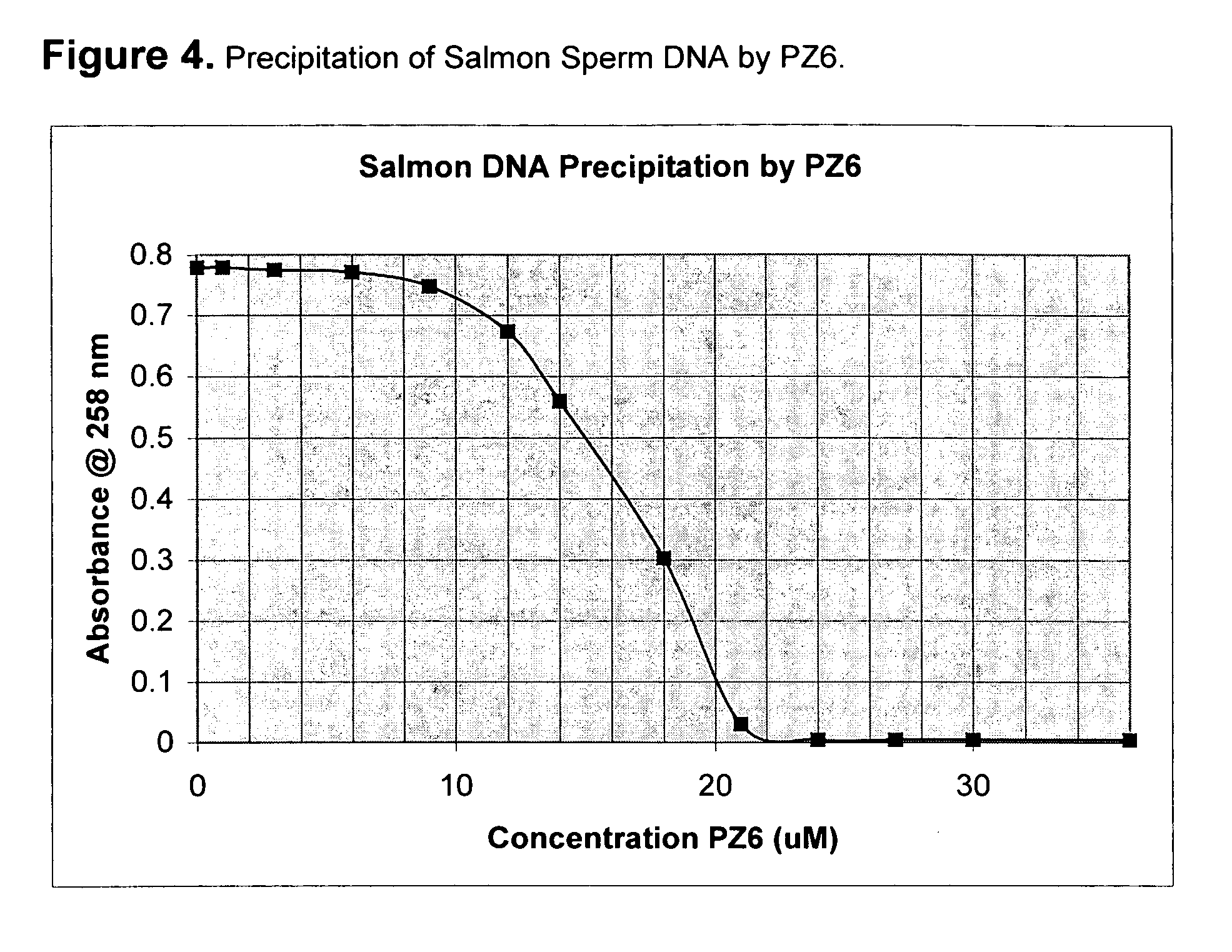Apparatus, methods and compositions for biotechnical separations
a biochemical and apparatus technology, applied in the field of biochemical assays and separations, can solve the problems of not providing samples in a state ready, most current methods of nucleic acid separation are relatively time-consuming, etc., and achieves the effects of high potency, broad scattering curve, and high potency
- Summary
- Abstract
- Description
- Claims
- Application Information
AI Technical Summary
Benefits of technology
Problems solved by technology
Method used
Image
Examples
example 1
RNA / DNA Compaction Separation
[0056] An E. coli alkaline lysate is preconditioned by an 8-fold dilution with water, and a quaternary ammonium compound; Quatro-diquat, available from SACHEM, (See Example 3) is added in a concentration of 30 uM to 40 uM, and precipitated the plasmid DNA much more than the RNA, producing a supernatent liquid enriched in RNA and a precipate (pellet) enriched in DNA. Upon checking the supernatants on an agarose electrophoresis gel, above 30 uM the plasmid band is missing, while the characteristic smear of RNA is still present.
[0057] This means Q-dQ and other quats are unexpectedly superior for plasmid purification. One of their key advantages is that the alkaline lysate needs only to be diluted to lower the ionic strength, and then the plasmid can be directly precipitated.
[0058] Compaction precipitation with poly quats is also compatible with good applicability in RT-PCR. It can remove genomic DNA effectively, leaving the great majority of the RNA in s...
example 2
Synthesis of Quatroquat
[0060] Dimapol [1,3-bis(dimethylamino)-2-propanol] (1 mol) is mixed with stirring with 1 mole 1-chloro-3-trimethylammonium-2-propanol chloride. Temperature rises to about 30 degrees Celsius. After one hour, an additional 1.4 moles of 1-chloro-3-trimethylammonium-2-propanol chloride and some water are added. After 12 hours at 25 degrees Celsius, the temperature is increased to 50 degrees Celsius and held for 1.5 hours.
example 3
Synthesis of PZ-6 (Quatrodiquat)
[0061] Dimapol [1,3-bis(dimethylamino)-2-propanol] (2 mol) is added to 360 g water with stirring. 2 moles of Reagens [1-chloro-3-trimethylammonium-2-propanol] is added over three hours, keeping the temperature below 25 degrees Celsius by cooling. After 6 hours the reaction is complete. 1,3-dichloro-2-propanol (1 mol) is added over 1 hour. The solution is heated to 50 degrees Celsius for three hours. Chloride determination indicated the reaction is complete.
PUM
| Property | Measurement | Unit |
|---|---|---|
| Fraction | aaaaa | aaaaa |
| Fraction | aaaaa | aaaaa |
| Concentration | aaaaa | aaaaa |
Abstract
Description
Claims
Application Information
 Login to View More
Login to View More - R&D
- Intellectual Property
- Life Sciences
- Materials
- Tech Scout
- Unparalleled Data Quality
- Higher Quality Content
- 60% Fewer Hallucinations
Browse by: Latest US Patents, China's latest patents, Technical Efficacy Thesaurus, Application Domain, Technology Topic, Popular Technical Reports.
© 2025 PatSnap. All rights reserved.Legal|Privacy policy|Modern Slavery Act Transparency Statement|Sitemap|About US| Contact US: help@patsnap.com



